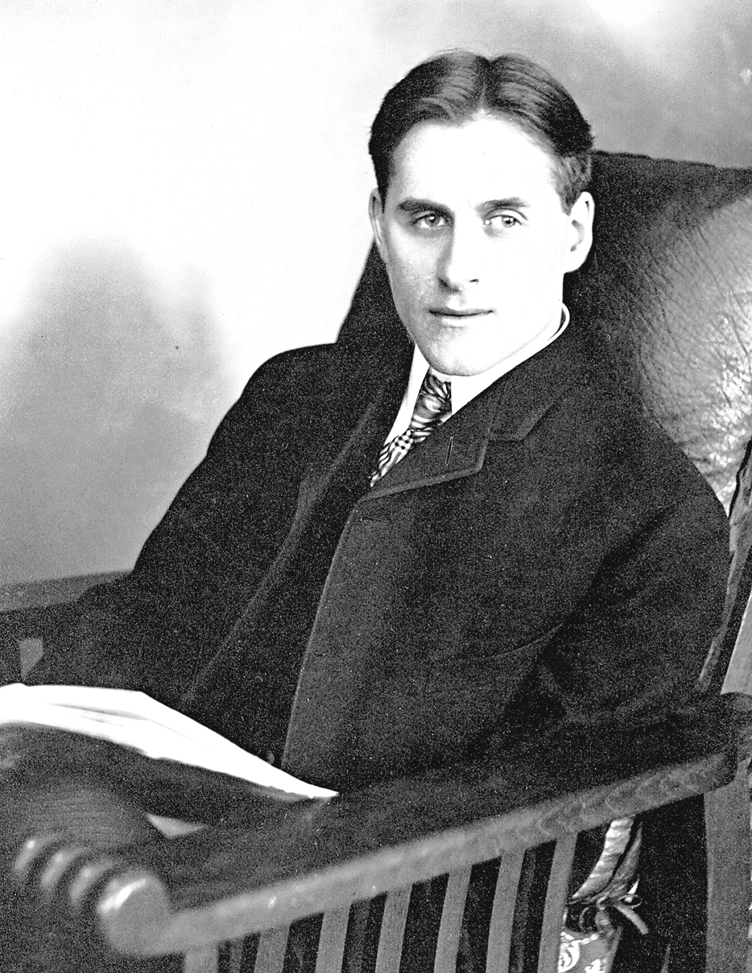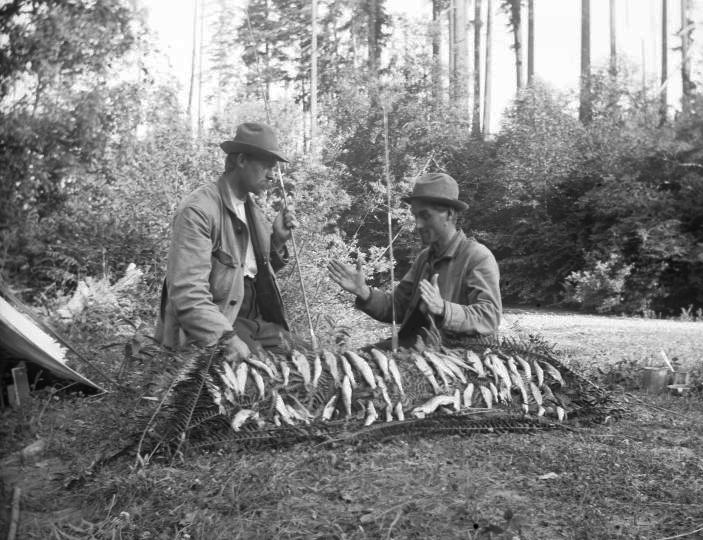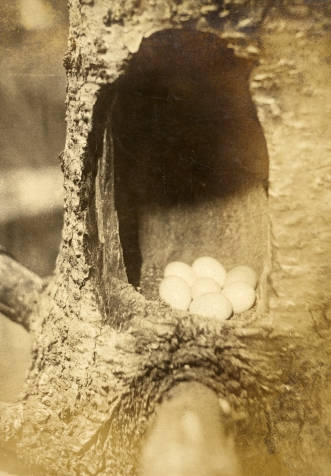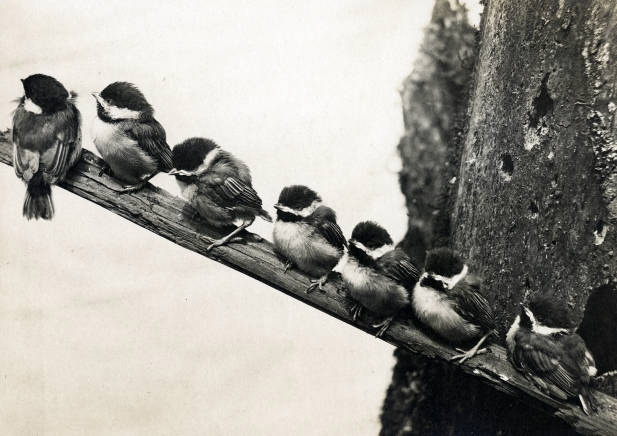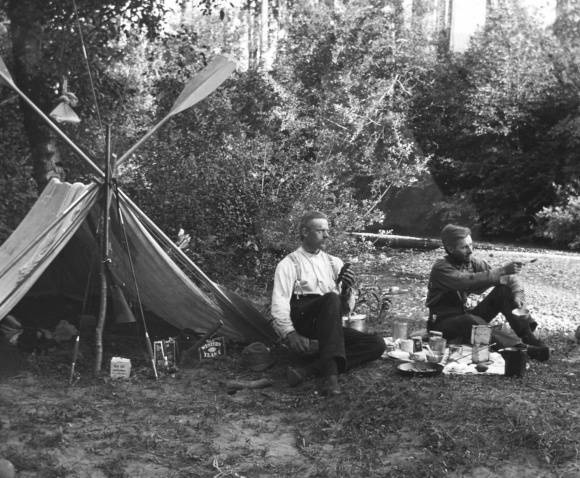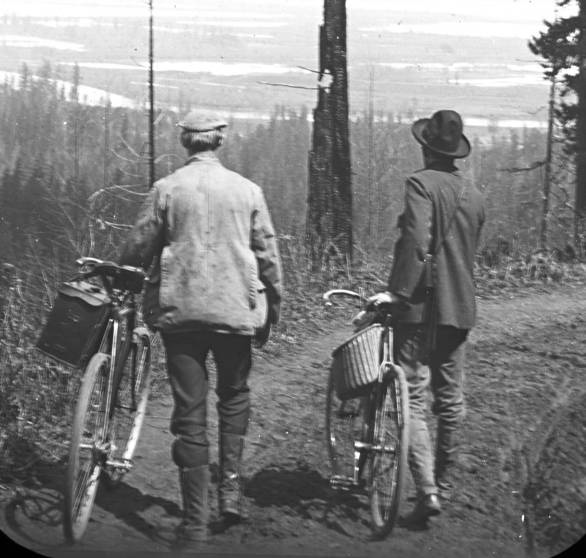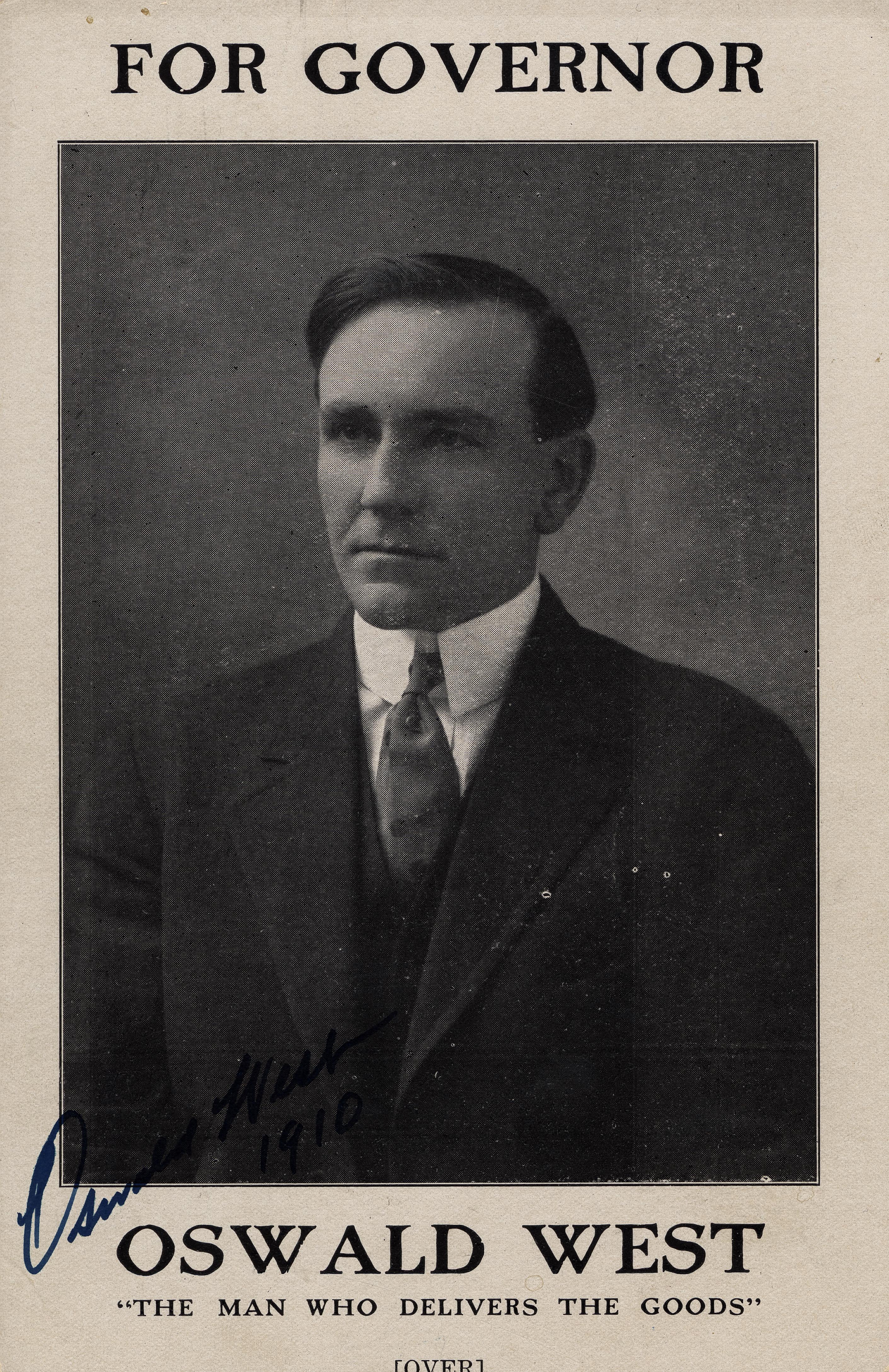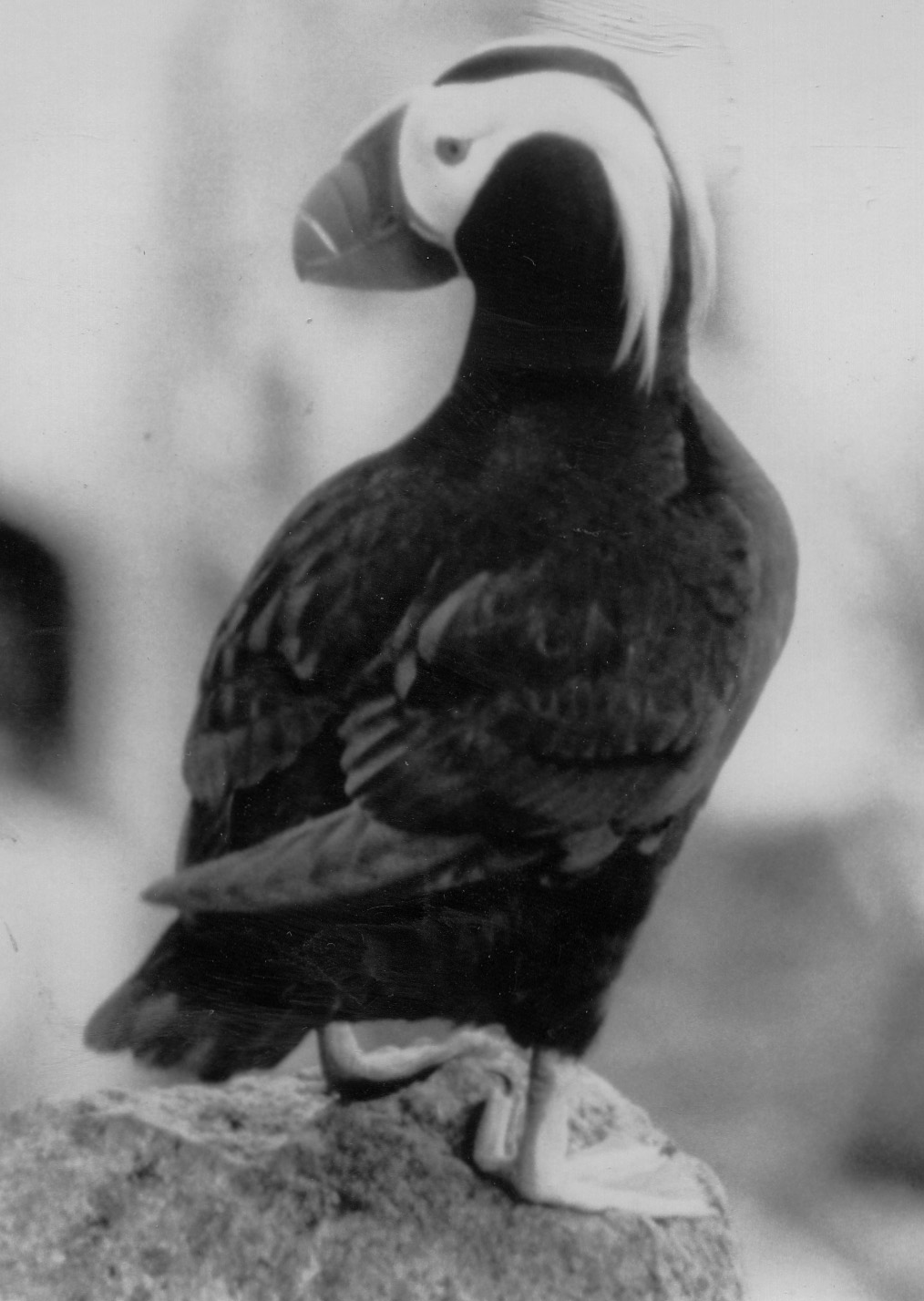Oregon's birds have had few better friends than William Lovell Finley. As a biologist, photographer, writer, filmmaker, and public official, Finley spent his life tirelessly advocating for the protection of wildlife, especially birds. His efforts led to the creation of three National Wildlife Refuges in Oregon, and a fourth was named William L. Finley National Wildlife Refuge in his honor.
Finley was a native Californian, born in Santa Clara on August 9, 1876. His family moved to Portland when he was ten years old, where his father founded a mortuary. Finley collected bird skins and eggs from an early age, and at eighteen he and several friends formed the North-Western Ornithological Association. He returned to California to attend the state university at Berkeley, but his summer breaks were spent in Oregon photographing birds with his friend and partner, Herman Bohlman.
Finley's foray into the developing field of wildlife photography coincided with the rise of the wildlife conservation movement, and he soon found himself swept up in the tide. He helped organize the state chapter of the Audubon Society and lobbied the Oregon legislature to pass a Model Bird Law, which it did the following year. The act criminalized the killing of nongame birds, but enforcement remained lax until Finley helped secure private funds to hire additional wardens.
The members of the Oregon Audubon Society elected Finley president in 1906, the same year he married his college sweetheart, Nellie Irene Barnhart. In 1907, he published American Birds, his first book. Meanwhile, Bohlman was becoming more involved in his father's plumbing firm, and Irene became Finley's principal collaborator.
Moved by the photographs Finley and Bohlman had taken of nesting grounds on a tiny archipelago off the Oregon coast near Oceanside, President Theodore Roosevelt created the Three Arch Rocks National Wildlife Refuge on October 14, 1907. The next year, at Finley's urging, the president declared additional refuges in Klamath and Harney Counties.
Finley joined the administration of Governor Oswald West in 1911 and spent the next eight years as a state official, serving as Fish and Game commissioner, state game warden, and state biologist. He expanded the state's force of game wardens, replenished the depleted elk population in the Wallowa Mountains with a herd transplanted from Yellowstone National Park, and stocked previously barren lakes with trout.
While working for the state, Finley continued to advocate for wildlife conservation through various media. He published a second book, Little Bird Blue; founded a magazine, the Oregon Sportsman; and made motion pictures.
In 1919, the Oregon Fish and Game Commission concluded that Finley's roles as conservationist and hunting advocate were incompatible and summarily fired him. Although he would return to the commission from 1926 to 1930, the bulk of Finley's professional energy from 1920 onward was spent writing and filmmaking.
Finley died on June 29, 1953, after suffering several debilitating strokes, but his legacy lives on. In 1964, the U.S. Fish and Wildlife Service named a new 5,325-acre National Wildlife Refuge in the Willamette Valley for Finley, and the largest of the Three Arch Rocks bears his name. His photographs, articles, and films remain as captivating today as they were in the first years of the twentieth century. Sadly, most of Finley's movies were lost in a 1980 fire, but what remains has been lovingly preserved by archivists across the country.
Thanks to his passionate vision, Finley's real legacy lies in the millions of puffins, pelicans, eagles, trout, seals, elk, and other animals who continue to thrive in Oregon.
-
![Bush-tit feeding young on William Finley's cap, about 1908.]()
Finley, William, bird on cap, ca 1908.
Bush-tit feeding young on William Finley's cap, about 1908. Photo William L. Finley, from 1908 "American Birds" book, courtesy Oreg. State Univ. Archives
-
![Cover brochure announcing William L. Finley's talk, "Camera Hunting on the Continental Divide," 1930s.]()
Finley, William L., Camera Hunting cover.
Cover brochure announcing William L. Finley's talk, "Camera Hunting on the Continental Divide," 1930s. Oreg. State Univ. Archives, William L. Finley Papers
-
![William L. Finley.]()
Finley, William, CN 021677.
William L. Finley. Oreg. Hist. Soc. Research Lib., CN 021677
-
![William Finley with white pelicans at Lower Klamath Lake, 1905.]()
Finley and pelicans, 1905, Finley A 1795.
William Finley with white pelicans at Lower Klamath Lake, 1905. Oreg. Hist. Soc. Research Lib., Finley A 1795
-
![William L. Finley (r) and Herman Bohlman, about 1905.]()
Finley, William L., with fish.
William L. Finley (r) and Herman Bohlman, about 1905. Oreg. State Univ. Archives, Herman T. Bohlman Photo Collec., P202:cruises fish catch
-
![William L. Finley (r) and Herman Bohlman, Klamath Marsh, about 1905.]()
Finley, William L., Klamath Marsh, 1905.
William L. Finley (r) and Herman Bohlman, Klamath Marsh, about 1905. Oreg. State Univ. Archives, Herman T. Bohlman Photo Collec., P202:Chicks
-
![Finley's photo of a flicker nest, about 1908.]()
Finley, William L., nest and eggs.
Finley's photo of a flicker nest, about 1908. Photo William L. Finley, from 1908 "American Birds" book, courtesy Oreg. State Univ. Archives
-
![Finley's photo of chickadees, about 1908.]()
Finley, William L., chickadees.
Finley's photo of chickadees, about 1908. Photo William L. Finley, from 1908 "American Birds" book, courtesy Oreg. State Univ. Archives
-
![William L. Finley (r) and Herman Bohlman, about 1905.]()
Finley, William L., camping.
William L. Finley (r) and Herman Bohlman, about 1905. Oreg. State Univ. Archives, Herman T. Bohlman Photo Collec., P202:River Camp
-
![Herman Bohlman (l) and William L. Finley, about 1905.]()
Finley, William L., with bicycles.
Herman Bohlman (l) and William L. Finley, about 1905. Oreg. State Univ. Archives, Herman T. Bohlman Photo Collec., P202:Bicycles
Related Entries
-
![Oceanside]()
Oceanside
"It would be one of the biggest and finest resorts of the Pacific North…
-
![Oswald D. West (1873-1960)]()
Oswald D. West (1873-1960)
Oswald D. West served as Oregon's fourteenth governor, between 1911 and…
-
![Three Arch Rocks National Wildlife Refuge and Wilderness]()
Three Arch Rocks National Wildlife Refuge and Wilderness
At fifteen acres, Three Arch Rocks lays claim to being one of the small…
Related Historical Records
Map This on the Oregon History WayFinder
The Oregon History Wayfinder is an interactive map that identifies significant places, people, and events in Oregon history.
Further Reading
Butcher, Russell D. America's National Wildlife Refuges: A Complete Guide. Lanham, Md.: Taylor Trade, 2008.
Finley, William L. American Birds: Studied and Photographed From Life. New York: Scribner, 1907.
Mathewson, Worth. William L. Finley: Pioneer Wildlife Photographer. Corvallis: Oregon State University Press, 1986.



